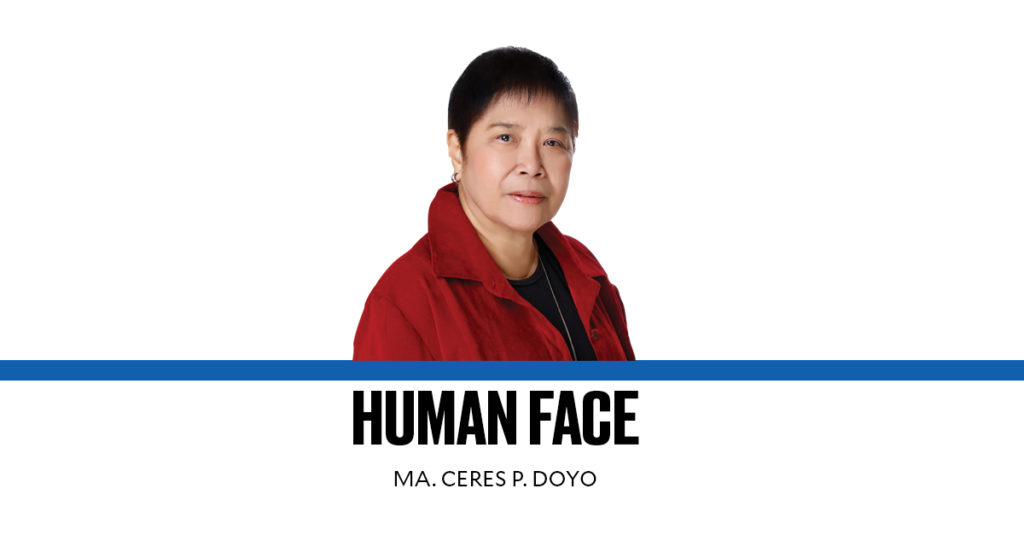There is a popular word in Bicol that has no exact equivalent in Filipino languages or in English, and that is “oragon.”
There are a number of Bicol languages, by the way, each with particular diphthongs that are difficult to spell using the alphabet, like the Bicol of Buhi in Camarines Sur (with German-sounding guttural sounds) or of Camalig in Albay. If Tagalog has “Bababa ba?”, Camalig has “Kikoko ko.” But I think most, if not all, have oragon in their vocabulary.
I am half Bicolana, half Ilongga, and I did not grow up in Legazpi City in Albay where my mother’s Peralta family is rooted. But I did spend summers there and I can speak and understand colloquial Albay Bicol, which was enriched by my fellow internas in college who became my bosom buddies and partners in mischief, BFFs until now. Many of them were high school grads of the Benedictine-run St. Agnes Academy, sister school of St. Scholastica’s College.
I used to think that oragon referred to street-corner toughies, not baddies really, but graduates of the School of Hard Knocks. It can also mean sexy or macho. Now I know that it can refer to tough, resilient no-nonsense women, too, but with a heart. Like Vice President Leni Robredo, a Bicolana. More on her later.
These thoughts have been swirling in my mind in the aftermath of last week’s Supertyphoon “Rolly” that devastated the Bicol region and other Southern Luzon provinces. But while the Bicolanos rise to their feet, we humbly plead for help.
According to the Urban Dictionary, oragon “is Bicol slang for somebody who is feisty, determined, principled, a fighter, unafraid of consequences, and who stands up for his(/her) principles.” Perhaps like the Tagalog astig (coined from tigas) which simply means tough. Orag is the oomph that makes a person oragon.
So “makaoorag” would mean an act that calls for someone to be angered, annoyed, or to retaliate. Something that riles the oragon.
But what shaped the oragon? Is it the volcanic soil surrounding the Mayon Volcano whose countless eruptions for eons have fertilized everything that grew around it and toughened those who live in awe of it? Is it the gulayon, the natong (taro leaves and stalks), the superhot chili, the coconut and the pili nut in Bicol meals? Is it their religious faith?
It is said that when Bicolanos learn about an impending typhoon, the first thing they do is to secure the siling labuyo (simply sili to Bicolanos) bushes in their yards or farms. Because what is life without the sili’s hotness? I remember a Bicol culinary fiesta in a five-star hotel where Albay’s first district congressman Edcel Lagman extolled the sili as the Bicolanos’ anti-depressant, the hotter the better, while calling it “an inferno on one’s tongue.”
With the Bicol region in ruins, I cannot help but wonder if the sili plants withstood the wrath of “Rolly.” I can only hope that the Bicolanos are summoning enough orag to build their lives again.
Still, we dig into our pockets and forget so-called donor fatigue in this pandemic season. I did post on Facebook an updated photo of myself with the perfect cone in the background, the “Daragang Magayon” (beautiful maiden) kissed by tufts of clouds, and with a straightforward appeal for donations.
You may send cash donations to the Benedictine Sisters in St. Agnes Academy in Legazpi City (SAA BPI Account 0841 0252 45). You may go to SAA Operation Tabang 2020 on Facebook.
Or to the Philippine Province of the Good Shepherd Inc. (BPI Acct Loyola Katipunan, 3081 0020 87, US Dollar Acct. 3084 0004 84, Swift Code BOPIPHMM).
The Good Shepherd Sisters have a community in Legazpi City and contemplative sisters in Virac, Catanduanes, which was leveled to the ground.
Among the first responders from officialdom was VP Robredo. Even more important than the relief packs her team brought was presence, she told ABS-CBN News online. “Our presence on the ground gives people hope and an assurance that they are not forgotten. Reassuring presence is not so much in holding big events or meetings but in simple, everyday conversations with ordinary people.” One photo shows this oragon VP riding a tricycle through the ruins.
Send feedback to cerespd@gmail.com
